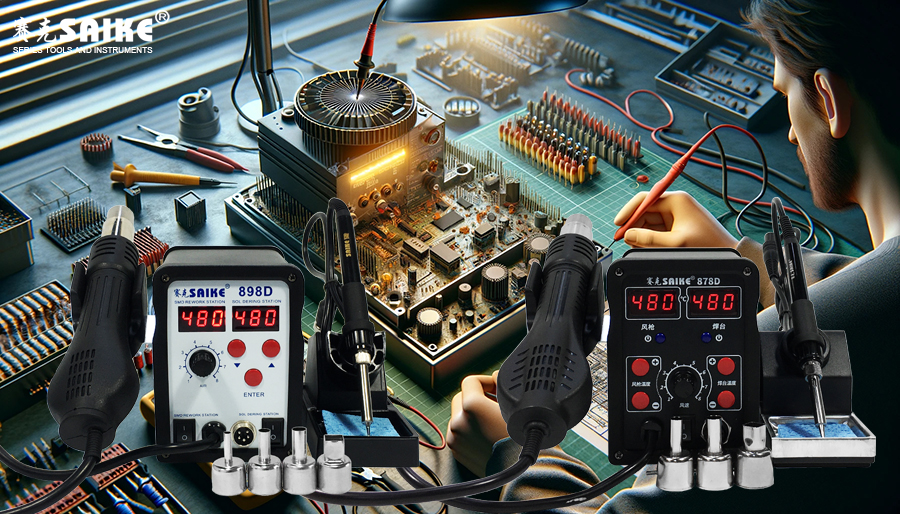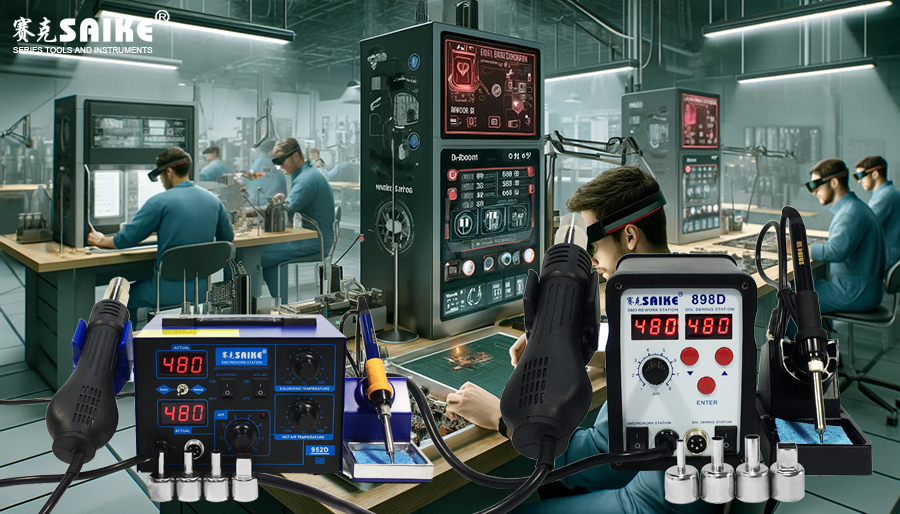
SK-YJ000RFCHT-KP 100027
Hot air rework stations are indispensable equipment in the electronic repair industry, and their performance largely depends on precise control of temperature and airflow. Correct temperature and stable airflow are crucial for achieving high-quality soldering and desoldering results. This article explores the potential issues that hot air rework stations may encounter in temperature control and airflow stability, and provides detailed diagnosis and treatment methods.
I. Temperature Control Issues
1.Problem Identification
– Inaccurate temperature readings: There is a significant difference between the displayed temperature and the actual temperature of the equipment.
– Large temperature fluctuations: The temperature of the equipment is unstable and frequently changes during operation.
2.Possible Causes and Diagnosis
– Temperature sensor failure: Use a multimeter to check if the resistance value of the temperature sensor meets the specifications.
– Control system problems: Inspect the circuit board of the temperature controller for damaged components or burn marks.
– External environmental influences: Confirm if the working environment temperature is too high or too low, and whether the equipment has sufficient space for heat dissipation.
3.Treatment Methods
– Replace the temperature sensor: If the sensor is damaged, replace it with a new one.
– Repair or replace the controller: For a damaged controller, it should be repaired or replaced directly.
– Optimize the working environment: Improve the temperature conditions and ventilation of the workspace to ensure good heat dissipation for the equipment.
II. Airflow Stability Issues
1.Problem Identification
– Inconsistent wind speed: The airflow output is unstable, sometimes strong and sometimes weak.
– Airflow interruption: The airflow suddenly stops during use.
2.Possible Causes and Diagnosis
– Fan motor failure: Check if the fan motor is operating normally, and use a voltmeter to measure the supply voltage of the motor.
– Air duct blockage: Inspect the air duct for blockages caused by dust or foreign objects.
– Air speed controller problems: Examine the air speed controller and its circuits for signs of damage or aging.
3.Treatment Methods
– Repair or replace the fan motor: If the motor is damaged, it should be replaced promptly.
– Clean the air duct: Remove all blockages from the air duct, and compressed air can be effectively used for cleaning.
– Repair or replace the air speed controller: For a faulty controller, it should be repaired or replaced.
III. Systematic Inspection and Prevention
1.Regular Maintenance:
– Regularly perform a comprehensive inspection of the hot air rework station, including cleaning internal dust and checking the integrity of all circuits and components.
2.Preventive Measures:
– Ensure that all parts of the equipment are clean and free of debris before operation, especially the temperature sensor and air duct.
3.Technical Training:
– Regularly provide operators with training on equipment maintenance and troubleshooting to improve the team’s maintenance capabilities and efficiency.
IV. Summary
The efficient operation of hot air rework stations relies on precise control of temperature and airflow. By recognizing and addressing temperature control and airflow stability issues, not only can welding quality be improved, but equipment lifespan can also be extended. Regular maintenance and correct operation are key to avoiding these problems, while ensuring that the equipment is always in optimal working condition. Correct diagnosis and timely handling of these common issues will greatly enhance the efficiency and success rate of hot air rework stations.


